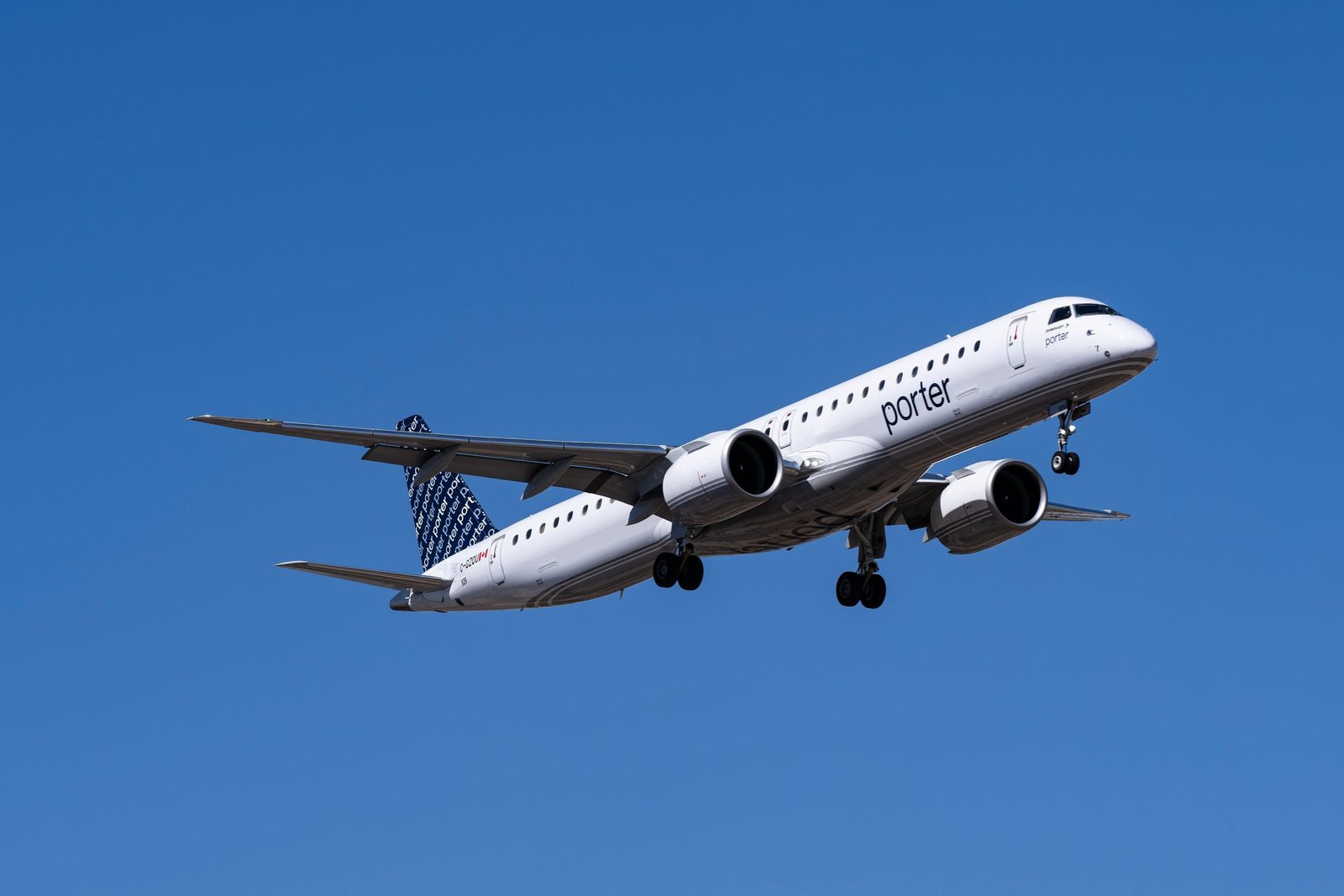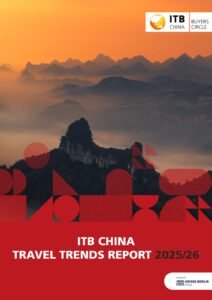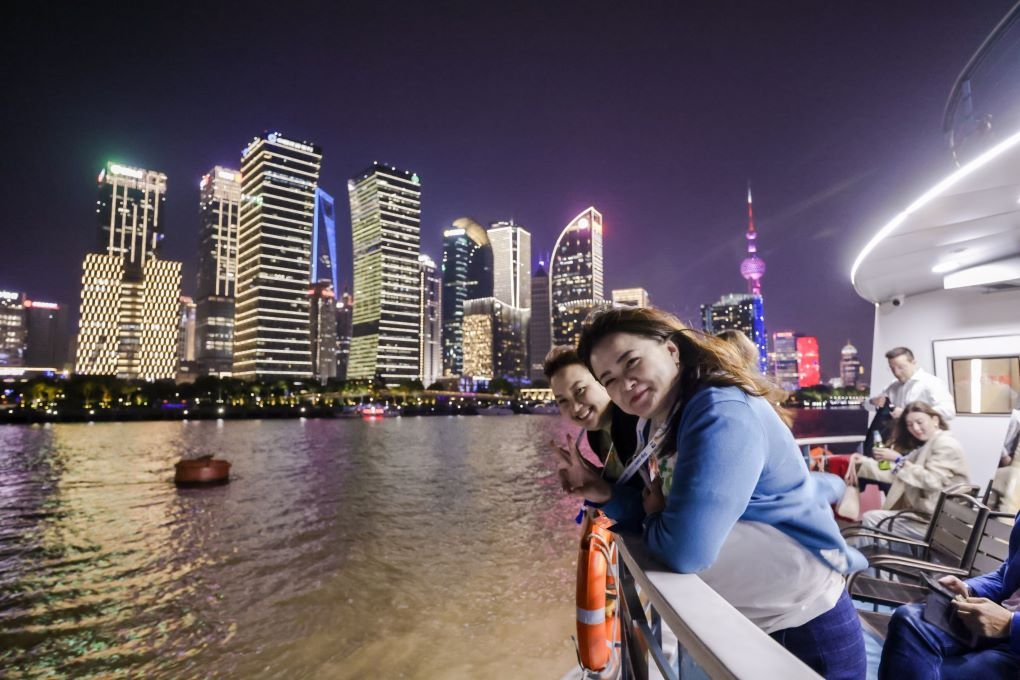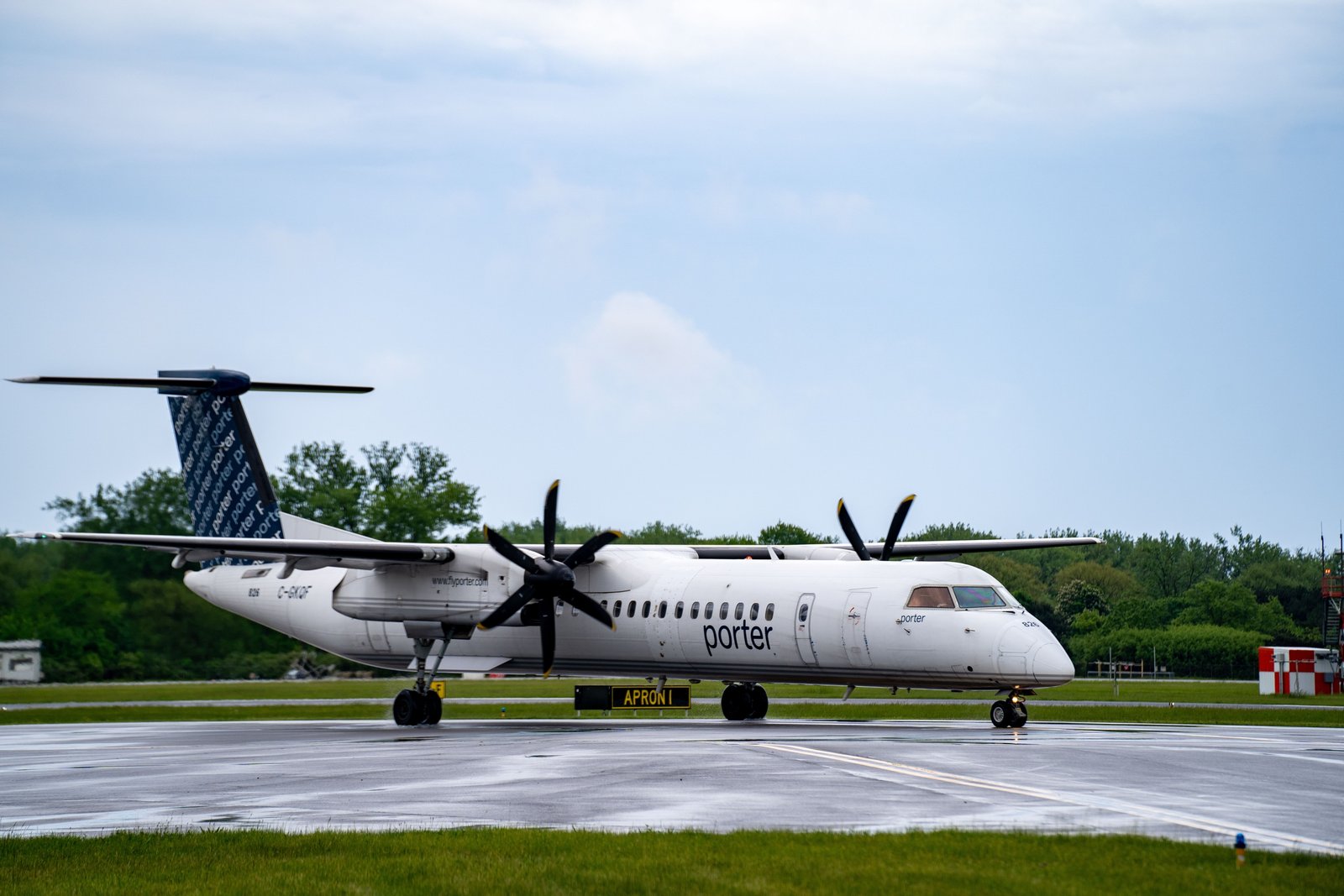Travel Trends
Global travel and tourism sector deal activity down 8% YoY during H1 2025, reveals GlobalData

The travel & tourism sector witnessed a notable decline in deal activity in the first half (H1) of 2025, reflecting a shift in market dynamics and investor sentiment. The total number of deals (mergers & acquisitions (M&A), private equity and venture financing) announced year-on-year (YoY) fell by around 8% in H1 2025, reveals GlobalData, a leading data and analytics company.
An analysis of GlobalData’s Deals Database revealed that all the deal types under coverage registered decline. The number of venture financing and private equity deals registered YoY decline of around 25% and 20%, respectively, during H1 2025 while M&A activity exhibited relative resilience, with a slight contraction of 3.5% in deal volume.
Aurojyoti Bose, Lead Analyst at GlobalData, comments: “The overall decline underscores a broader trend where macroeconomic factors and investor sentiments are reshaping deal-making strategies within the industry. The subdued activity suggests that dealmakers are becoming increasingly cautious likely due to the macroeconomic challenges and volatile market conditions. The decline in venture financing and private equity deals, suggests a dent in investor sentiment, emphasizing a trend of reduced risk appetite.”
The Asia-Pacific market emerged as a bright spot, witnessing an increase of around 11% in deal volume in H1 2025. This growth can be attributed to countries like Japan and India showing improvement in deal activity.
Conversely, other regions witnessed decline in deal activity. Europe, North America, Middle East and Africa, and South and Central America registered decline of around 19%, 10%, 39% and 12% in their respective deal volumes during H1 2025 compared to H1 2024.
The US, China and Germany saw YoY decline in the number of deal announcements in H1 2025 while the UK managed to maintain the deal volume mostly at the same level.
The article Global travel and tourism sector deal activity down 8% YoY during H1 2025, reveals GlobalData first appeared in TravelDailyNews International.
Travel Trends
Why is Italy Continually Dominating Global Travel Trends? Exploring the Surge in Outbound Tourism, Changing Traveler Preferences, and the Economic Impact on Popular Destinations

Monday, August 4, 2025
Outbound Tourism Surge in 2025: A Global Shift Toward Extended Travel
Between April and June 2025, international tourism experienced a notable upsurge. The total number of outbound trips taken during this period reached 208,988, marking an impressive 11.6% increase compared to the previous months. The growth didn’t stop at the number of trips; the total nights spent abroad also skyrocketed, reaching 1,493,684, reflecting a remarkable 23.9% increase. These figures paint a vivid picture of the growing global trend toward international exploration, with travelers showing a greater willingness to spend extended periods abroad.
This increase in outbound tourism not only reflects a rise in the number of trips taken but also signals a broader shift in how people are approaching travel in 2025. As the world becomes more interconnected, more people are venturing to distant corners of the globe, whether for leisure, business, or other purposes. The extended stays are a clear indication that travelers are becoming more invested in the experiences they seek while abroad, shifting from quick getaways to deeper, more immersive experiences.
Italy’s Unrivaled Popularity Among Travelers
Italy continued to dominate the international travel scene during this period, capturing an impressive 37.9% of all outbound trips. The allure of this Mediterranean country remains undeniable, with its rich history, world-class art, breathtaking landscapes, and unparalleled cuisine consistently drawing millions of travelers each year. Italy’s iconic cities like Rome, Florence, and Venice, along with its charming countryside and coastal regions, are a major part of the country’s ongoing appeal.
Italy’s consistent position as the leading travel destination highlights its continued significance in the global tourism market. The cultural and historical heritage that the country offers, combined with a modern vibrancy in its cities, ensures that it remains at the forefront of travelers’ minds. For many, it represents the ultimate travel experience, blending the past with the present in a way few countries can replicate.
The Shift Toward Non-Rented Accommodations
A noteworthy shift in travel habits was observed in the types of accommodations travelers chose during this period. Over half of the nights spent by tourists abroad—51.6%—were in non-rented accommodations. This significant trend reveals that a growing number of travelers are opting for more personalized and flexible lodging options. Instead of staying in traditional hotels or rental properties, many travelers are choosing to stay with family or friends, or even in alternative spaces such as hostels or shared apartments.
This move toward more informal, sometimes more affordable accommodations, reflects changing attitudes toward travel. Budget-conscious travelers, as well as those seeking unique, more intimate experiences, are driving this shift. It points to a broader trend where flexibility and authenticity are becoming more important than the traditional comforts of hotel stays. As a result, this growing preference for non-rented accommodations could reshape the hospitality landscape, with a shift away from conventional hotels to more diverse, experiential options.
First Half of 2025: A Steady Global Growth in Travel
In the first half of 2025, international tourism maintained its upward trajectory. A total of 390,391 outbound trips were recorded, reflecting a solid 6.1% increase compared to the same period in 2024. These figures illustrate a clear and consistent growth in international travel, indicating that people are increasingly looking beyond their borders to explore new destinations. Travelers are not only traveling more but are also staying longer at their destinations. In total, tourists spent 2.8 million nights abroad, which represents a 16.8% rise from the previous year.
The growing appetite for international travel indicates a global shift. More people are seeking international experiences, whether it’s exploring new cultures, enjoying exotic landscapes, or simply broadening their perspectives. The increase in the average number of nights spent abroad suggests that travelers are evolving in terms of their approach to vacations—opting for longer stays and deeper engagements with their destinations.
Rising Tourism Expenditures: A New Era of Travel Investment
One of the most striking features of the first half of 2025 was the significant increase in tourism expenditure. From January to June 2025, tourism spending surged to an estimated €377.5 million, reflecting a 14.5% growth over the previous year. This increase in overall spending was accompanied by a rise in per capita expenditures. On average, travelers spent €967 per person, marking a 7.9% increase in individual spending compared to prior years.
This boost in tourism spending suggests that travelers are no longer simply covering the basic costs of travel. Instead, they are investing more heavily in their experiences. The rise in spending isn’t confined to traditional travel expenses such as flights and accommodations. It extends to spending on local experiences, including sightseeing, fine dining, excursions, and shopping. This trend reveals that modern travelers are more willing than ever to immerse themselves fully in the culture of their destinations.
As tourists allocate a higher percentage of their budget to experiences, it has a direct positive impact on the local economies of travel destinations. Local businesses, including restaurants, entertainment venues, and tour operators, are likely to benefit from this shift in spending behavior. This increase in expenditure signals a healthy, thriving tourism industry that is benefiting both the visitors and the local economies.
The Global Impact on the Travel and Hospitality Industries
The surge in both the number of travelers and their spending levels is creating ripple effects across various industries. Destinations like Italy, which attract large numbers of international tourists, are seeing significant economic benefits. The tourism industry plays a vital role in driving growth in related sectors such as hospitality, transportation, and tourism services.
Tourists staying longer and spending more means that local businesses—especially those involved in tourism—are experiencing greater profitability. This is particularly true for non-rented accommodations, such as hostels, guesthouses, and shared accommodations, which have seen a marked rise in demand. Smaller local businesses, from independent hosts to local eateries, are reaping the rewards of these shifts in travel preferences.
The transportation sector, including airlines, buses, and taxis, is also benefiting from the increase in travel. With more people flying, taking trains, or using local transport, the demand for transportation services is on the rise, further stimulating local and national economies. This increase in traveler movement also presents opportunities for real estate markets, especially in cities where short-term rentals are in demand.
A Ripple Effect Across Multiple Sectors
The positive effects of this increase in outbound tourism extend well beyond the immediate tourism sector. Industries like retail, real estate, and even technology are experiencing a trickle-down effect from the tourism boom. As more people travel, there’s a heightened demand for a wide range of products and services, from souvenirs to local products. Retailers in tourist hotspots are thriving as travelers seek to take home a piece of their experience.
Furthermore, real estate markets are benefiting from the growing popularity of short-term rentals. These properties offer both owners and travelers more flexibility, and the demand for such rentals continues to grow. As tourists increasingly seek authentic local experiences, these short-term accommodations have become a key part of the tourism landscape.
Adapting to Changing Travel Trends: The Need for Flexibility and Innovation
The rise in both travel numbers and spending levels is also creating new challenges for the tourism industry. Destinations must adapt to the changing demands of modern travelers, who are seeking a broader variety of accommodation options, and more personalized travel experiences. The era of mass tourism, where visitors were primarily looking for iconic landmarks and traditional attractions, is giving way to a new kind of tourism focused on authenticity and immersion.
Travelers today are no longer content with simply visiting a place; they want to connect with its culture, its people, and its traditions. They are seeking out more bespoke, localized experiences, such as culinary tours, art workshops, or off-the-beaten-path excursions. For destinations to stay relevant, they must tailor their offerings to meet these evolving preferences, ensuring that tourists feel personally engaged with the places they visit.
Long-Term Outlook: Tourism as a Key Economic Driver
The data from 2025 indicates that international tourism is not only recovering but thriving. As countries like Italy continue to attract large numbers of international visitors, it is clear that tourism will remain a significant economic force. The growing trends toward longer stays, increased spending, and alternative accommodations all point toward a positive future for the industry.
However, this future is not without its challenges. The travel and hospitality industries must continue to evolve, ensuring that they cater to the increasingly sophisticated needs of modern travelers. Innovation, flexibility, and sustainability will be the key drivers of success for destinations and businesses looking to capture the growing market of travelers who demand more.
The Global Impact of Tourism Trends in 2025 and Beyond
Looking forward, the rise in outbound tourism in 2025 will have far-reaching implications for global travel. Destinations that offer rich cultural experiences, such as Italy, are likely to continue benefiting from increased tourism. The economic benefits of this growth are spread across various sectors, from transportation to retail to real estate.
The broader impact of these tourism trends will be felt across the world as local economies thrive from the influx of visitors. At the same time, tourism strategies must evolve to address the changing demands of travelers. A more sustainable, flexible, and personalized approach will be key to ensuring that the tourism industry continues to grow in a way that benefits both tourists and the destinations they visit.
In conclusion, as international tourism continues to grow, driven by increased spending and longer stays, the global travel industry is poised for a prosperous future. The focus will shift to providing unique
Travel Trends
Canadian Airline Applauded For Extending Its Hand To The United States With A New “First Ever” Route

It has been an unexpected year for the top airlines in Canada. All major Canadian airlines have had to pivot due to the reduced travel trends toward the United States. Air Canada has boldly cut routes to warm Florida areas like Jacksonville. Instead, the airline has been applauded for replacing its declining U.S. travel with other markets, including South America.
WestJet has adopted a similar approach to Air Canada by eliminating several U.S. routes.
However, we can’t say the same for Porter Airlines, which continues its expansion in the United States despite the current uncertainty.
Porter Airlines has just announced another change to the U.S., and this one is fascinating, marking the first of its kind route for Porter Airlines.
Here’s a closer look at Porter’s bold move, and why they continue to generate positive reviews for their newest routes.
Porter Airlines Expanded On Its Florida Presence With “First Ever” Routes From Hamilton
Porter Airlines continues to make positive advancements. The airline added 10 Embraer E195-E2 aircraft, bringing its jet total to 44.
Additionally, the airline continues to expand its routes. Although the majority of its flights are domestic, Porter Airlines is also expanding its reach to popular international destinations, such as Mexico and Costa Rica, which continue to attract Canadians. In fact, on November 5th, Porter Airlines is introducing a new route from Toronto to Cancun, Mexico.
Also on the list of debuts are a November 14th flight to Puerto Vallarta, Mexico, and a flight to Nassau, Bahamas on November 26th.
Canadian travelers can also expect more service to the United States. As mentioned earlier, most Canadian airlines are scaling back, but Porter Airlines has seen the opposite trend. They currently have a pending agreement for a codeshare deal with American Airlines. This will only expand its U.S. reach that much further.
Additionally, Porter has upped its presence in Florida, recently announcing new routes and trips that are the first of their kind specifically for Porter Airlines.
Sky Harbor International Airport, 10-5-24 Phoenix AZ USA Porter Airlines Embraer ERJ-195E2 C-GZQU arrival into 8 at Sky Harbor International Airport.
Big changes are looming. Porter Airlines is expanding its presence at Hamilton International Airport (YHM). New and exciting routes have been announced, including stops at Orlando International Airport and Fort Lauderdale-Hollywood International Airport (FLL). The Orlando flights in particular start on December 12th, just in time for the holiday season. The Fort Lauderdale route debuts the following day, on December 13th.
According to the Financial Post, both flights will operate three times weekly and, for now, will be seasonal flights until April. The routes are key for Porter, making them the first U.S. routes for the airline from Hamilton.
Andrew Pierce, vice president of Porter Airlines, issued a statement on the new route:
“We are continuing to grow our presence in Hamilton, announcing nine nonstop routes this year. This is part of our commitment to taking travelers where they want to go, and we’re pleased to offer Hamiltonians the elevated economy flying experience they deserve.”
Porter’s Embraer E195-E2 aircraft will be taking on the routes.
The good news here is there are no middle seats on the plane that feature two-by-two seats, without the burden of a middle seat for travelers.
The New Schedule Breakdown:
- Hamilton to Orlando: Tuesday, Friday, Sunday
- Hamilton to Fort Lauderdale: Monday, Thursday, Saturday
The return flights for both routes are on the same days.
Flight times from Hamilton to Orlando include departures of 7:05 am on Tuesday and Friday, along with 3:15 pm on Sunday. The departure to Fort Lauderdale is at 7:25 am, while the weekend departure is at 11:45 am, both starting from Hamilton.
Porter Airlines Generates Huge Praise For Its Florida Expansion
Porter Airlines.
Hamilton International is thrilled over the news of Porter expanding, especially in key markets such as Orlando and Fort Lauderdale. The time is a bonus, particularly for Hamilton’s snowbirds who decide to leave during the holiday season.
Hamilton International said in a statement, “We’re thrilled to see Porter continue to grow here at Hamilton International, adding two more exciting sun destinations this winter. Our community has already shown strong support for Porter’s elevated economy experience, and the addition of Orlando and Fort Lauderdale reflects that enthusiasm.”
The airport added, “This winter will also mark a historic first for our airport as we introduce passenger boarding bridges, further enhancing the comfort and convenience of the travel journey. It’s a win for travelers, a win for the Southern Ontario region, and a testament to the strength of the partnership between Hamilton International and Porter.”
This is Porter Airlines’ fourth destination from Florida to Canada, making it the top international market for the airline.
In the meantime, Porter is not only expanding its presence in Florida, but also in other parts of the United States, including New York.
Porter Airlines Is Expanding Elsewhere In The United States, Especially New York
Despite the tension and reduced travel between Canada and the United States, Porter Airlines continues to view the United States as a crucial market. The airline reaffirmed that Porter Airlines is a “key long-term market.”
With that in mind, Porter has expanded service to LaGuardia, while also enhancing its New York-Newark service from Montreal. Other U.S. adjustments include adding flights to Phoenix and San Diego, while also increasing service to Las Vegas and the previously mentioned Florida areas.
A bold approach from Porter Airlines, without a doubt. It remains to be seen if these new routes work in favor of the airline. For now, it is nothing but a positive for Hamilton, as its presence continues to expand thanks to Porter’s latest efforts.
Be sure to let us know your thoughts on Porter expanding in Hamilton. Is this the right move? Chime in down below.
Travel Trends
ITB report identifies key travel trends driving China’s tourism growth : Moodie Davitt Report

CHINA. ITB China has highlighted the latest trends and outlined the next phase of growth and opportunity across three core areas of the country’s travel ecosystem in its newly released Travel Trends Report 2025/26.
The report, produced in collaboration with industry research firm Tourism Economics and leading travel service provider Trip.com Group, draws on insights from a quantitative survey of 1,400 ITB China Buyer Circle members.
Messe Berlin China Deputy General Manager Lydia Li said, “With this annual trends report, we aim to provide actionable insights for global partners and industry professionals interested in the Chinese travel market.
“Our goal is to help them better understand Chinese travel demand and industry dynamics, identify opportunities, stay in step with market shifts, and make informed business decisions.”
The survey revealed a shift in China’s outbound travel demographics, according to data from Trip.com Group. Travellers born in the 1980s and 1990s represent 67% of the segment in 2024, a proportion expected to grow.
At the same time, the rise of ‘active seniors’ is reshaping the market, with more than 100 million expected to travel by the end of 2025 and drive spending beyond CNY1 trillion (US$140 billion).
As China’s outbound travel sector evolves, the strategic focus shifts to understanding the distinct preferences of these two key segments and aligning offerings to serve both.
Personalisation and non-traditional destinations
The ITB China Buyer Survey reveals a shift away from traditional “checklist sightseeing” towards travel that is emotionally engaging, lifestyle-driven and culturally immersive.
Findings show 82% of industry professionals now provide personalised itineraries, yet traditional group tours persist in the market, with 48% of Chinese travel agents still selling seat-in or small-group tour packages.
The study also sheds light on the growing need to balance travellers’ desire for autonomy with the practical constraints of global travel, such as time, language, visas and cost.
Those who can efficiently balance these competing demands will define the innovation of the hybrid travel model, the research suggests.
The innovation of the hybrid model that ultimately succeeds will rest with those who can navigate these challenges effectively, researchers noted.
With per-night spending by Chinese outbound travellers outpacing other key markets in 2024, Tourism Economics highlights a rising willingness among certain segments to invest in non-traditional, emotionally rich experiences. This raises the question of how the industry can meet this demand at scale while preserving authenticity.
Bleisure gains momentum amid China’s global growth

Another key finding was the strong growth potential in the ‘business + leisure’ (bleisure) segment, cited by 83% of respondents. This trend reflects a shift in corporate travel priorities, with higher demand for integrated experience value for delegates, teams and clients, beyond just meeting logistics.
The survey underscored a growing emphasis on employee well-being, engagement and brand storytelling, suggesting that the MICE sector’s growth drivers are evolving from cost management to value creation.
The full report explores what Chinese corporate clients now expect from destinations, analysing relevant data, industry verticals and the key drivers behind destination choices.
AI’s role in powering high-quality growth
The study also delved into the increasing role of AI in travel, with over half of ITB China Buyer Circle members now using AI tools for product recommendations, customer service applications and market analysis. It underscores the challenge of maintaining human-centered service while adopting AI-driven efficiencies.
The focus is also on how travel companies must balance AI-driven efficiency with human-centered service.
Inbound demand for China strengthens

Inbound tourism is becoming a key growth driver for China as the sector enters a new phase of expansion.
Tourism Economics projects continued gains in China’s share of global inbound overnights, supported by visa easing, restored air capacity and improved city-level readiness.
Traveller preferences are also changing, with a move toward FIT travel, social media-driven planning and higher demand for authentic, experience-led tourism beyond major landmarks.
The study points to a shifting competitive landscape, urging destinations and travel providers to rethink how they market, distribute and deliver experiences.
In addition, the balance between legacy and emerging source markets is becoming more complex, and the ability to notice and act on early demand signals will shape future success in attracting international travellers. ✈

-

 Brand Stories2 weeks ago
Brand Stories2 weeks agoBloom Hotels: A Modern Vision of Hospitality Redefining Travel
-

 Brand Stories1 week ago
Brand Stories1 week agoCheQin.ai sets a new standard for hotel booking with its AI capabilities: empowering travellers to bargain, choose the best, and book with clarity.
-

 Destinations & Things To Do2 weeks ago
Destinations & Things To Do2 weeks agoUntouched Destinations: Stunning Hidden Gems You Must Visit
-

 Destinations & Things To Do1 week ago
Destinations & Things To Do1 week agoThis Hidden Beach in India Glows at Night-But Only in One Secret Season
-

 AI in Travel2 weeks ago
AI in Travel2 weeks agoAI Travel Revolution: Must-Have Guide to the Best Experience
-

 Brand Stories1 month ago
Brand Stories1 month agoVoice AI Startup ElevenLabs Plans to Add Hubs Around the World
-

 Brand Stories3 weeks ago
Brand Stories3 weeks agoHow Elon Musk’s rogue Grok chatbot became a cautionary AI tale
-

 Asia Travel Pulse1 month ago
Asia Travel Pulse1 month agoLooking For Adventure In Asia? Here Are 7 Epic Destinations You Need To Experience At Least Once – Zee News
-

 AI in Travel1 month ago
AI in Travel1 month ago‘Will AI take my job?’ A trip to a Beijing fortune-telling bar to see what lies ahead | China
-

 Brand Stories2 weeks ago
Brand Stories2 weeks agoContactless Hospitality: Why Remote Management Technology Is Key to Seamless Guest Experiences



You must be logged in to post a comment Login